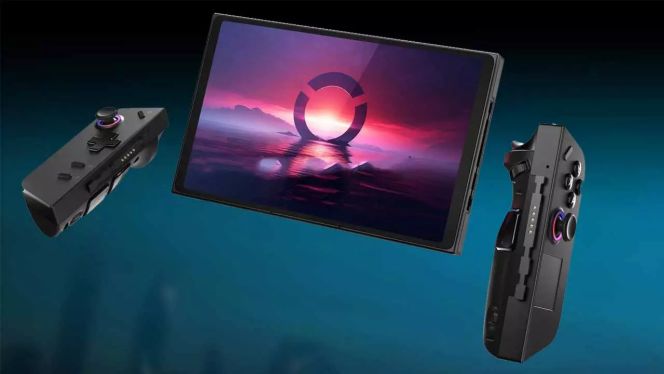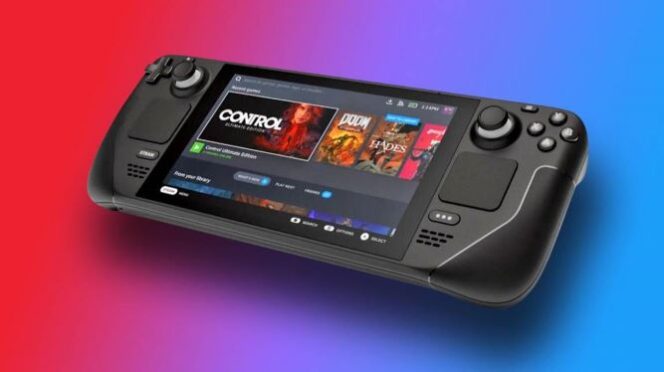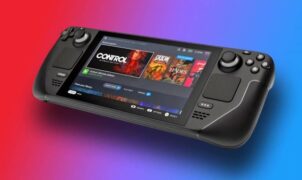TECH NEWS – Play on the go with these great handhelds, Steam Deck and the new Lenovo Legion Go. But which one should you buy?
Not only has handheld PC gaming become a reality, but there are actually quite a few great options to choose from. One of the most prominent is of course Valve’s Steam Deck, loved for its easy-to-navigate menus and excellent emulation. But the new Lenovo Legion Go is also an enticing tool. But it’s a little more expensive than the Steam Deck. So how do we choose between the two?
Price and specifications
The Legion Go is more expensive, starting at $699 with the cheapest storage option (almost on par with the Steam Deck’s most expensive storage option). The Steam Deck starts at $399 with the smallest storage option. This makes it the cheaper handheld of the two.
Of course, the pricing goes up from there depending on the storage option, although the Steam Deck will never be more expensive than $649. That makes every option on Valve’s handheld cheaper than any Legion Go. But price isn’t everything: both devices have pros and cons after purchase. Let’s start with the specifications:
Lenovo Legion Go specs:
- Display: 8.8-inch 2560 x 1600, 144Hz
- Processor: AMD Ryzen Z1 Extreme
- RAM: 16GB
- Storage: Up to 1TB (supports expandable storage)
- Battery Capacity: 49.2Whr
Steam Deck specs:
- Display: 7-inch 1280 x 800 IPS, 60Hz
- Processor: Custom AMD Zen 2/RDNA APU
- RAM: 16GB
- Storage: Up to 512GB (supports expandable storage)
- Battery Capacity: 40Whr
Performance
Looking at the specs, it’s easy to see that there are big differences between the handhelds, especially in terms of storage and display options. The Legion Go’s display has a much higher resolution and also has a higher refresh rate – which means it should support a smoother gaming experience than the Steam Deck (at least in terms of visuals). The Legion Go also offers higher storage options, with the 1TB configuration reaching almost twice as much as you’d expect from the Steam Deck. Both devices support expandable storage, so you’re not really tied to the built-in storage.
The Legion Go’s processor is also better than the now-outdated Steam Deck’s unique AMD processor, which is built on the older Zen 2 architecture. However, this does not necessarily mean a bigger performance boost; the GPU built into the Deck’s processor handles graphics better thanks to a higher core count. Many games are also well optimized for Steam Deck: the recently released Starfield, for example, performs well on Deck thanks to how well it is optimized for lower-end components.
Of course, no handheld computer will deliver the optimal experience you’d see on a higher-end PC, but that’s not exactly what they’re designed for. The Legion Go performs better when running at higher power, although this also means a reduction in battery life, which is another important aspect to keep in mind.
Battery life
On paper, the Legion Go has a slightly larger battery, with a two-cell 49.2 Whr battery compared to the Steam Deck’s 40 Whr battery. However, the battery life of the two devices depends largely on how this power is used and how much power the internal hardware draws.
The Steam Deck is well-optimised to get the most out of its battery life, and I experienced a good two to four hours of battery life while running intense games like Starfield, Cyberpunk 2077 and Red Dead Redemption 2. The Lenovo Legion Go, on the other hand, has more intense hardware, which can mean a decrease in battery life depending on how high you pump those settings up within games.
It’s hard to compare two devices in terms of battery life when the battery life in each cycle really depends on how you use the device itself. If you like to play games at lower graphics settings that don’t put as much strain on your hardware, you’ll get a lot more battery life than someone who pushes everything to the max and really puts a strain on the system. Either way, both devices have excellent charging capabilities, so while there’s no clear winner here, neither device is a loser.
Operating system
This is one of the biggest areas where you’ll see a difference between the Steam Deck and the Lenovo Legion Go, and that’s because the Legion Go is designed to run Windows 11 straight out of the box. Well, it does this well, but it’s still not as smooth as Valve’s SteamOS, which was built into the Steam Deck from the ground up. Steam Deck offers a desktop mode that mimics Windows, and you can even install Windows 11 if you want, although that’s a whole other kettle of fish.
Of course, which operating system you rely on will be purely opinion-based, although I’d say Steam Deck’s easy-to-navigate SteamOS is a massive winner. Steam Deck uses a system similar to Steam Big Picture Mode, which makes it easy to decide what games you want to install, play or stream from another PC. The Lenovo Legion Go, on the other hand, requires you to install Windows apps designed for Windows 11 and then navigate them as you would on a regular PC.
That’s not too bad, thanks to the mouse-like trackpad built into the Legion Go’s controller, but it’s certainly not as intuitive or simple as the Steam Deck’s operating system. Also, Legion’s handheld controller reportedly experiences problems determining whether you’re playing on a dedicated PC with a mouse and keyboard or a handheld gaming device. Some games will pick up keyboard and mouse controls without registering with the handheld’s built-in controllers, which can be a major annoyance for gamers who just want something easy to jump into.
The emulation works similarly on both devices, although a little more work needs to be done on the Steam Deck to get things working. There’s no clear winner when it comes to emulation, although I have to lean towards Steam Deck when it comes to overall ease of use.
Which handheld should you buy?
The Lenovo Legion Go will be released in November 2023 and Steam Deck is already readily available. So if you’re looking for one to buy now, the Deck is the obvious winner. If you don’t mind waiting, the Legion Go is a great choice, though it will cost a little more.
Overall, the Legion Go is probably the more powerful handheld of the two. Thanks to a more powerful processor, full Windows 11 support and a bigger, faster display. But for the price, it’s hard to beat the Steam Deck – it offers pretty much everything you’d expect from a handheld gaming PC, without a lot of extra fuss.
Of course, it would be nice to have a more powerful option. But at the end of the day, loading Steam Deck and getting into the game is as easy as pressing a few buttons. Plus, if you don’t want to, you don’t have to worry about Windows 11 junk getting in the way and ruining your gaming experience. So, if you want something that just works – which is what handheld gaming is all about – go for the Steam Deck.
















Leave a Reply